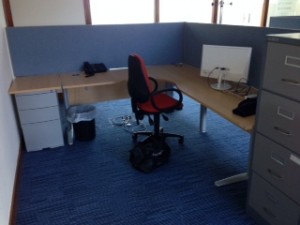Integrating your incident management process using a SaaS toolset provides dividends to the organisation.
An unplanned event happens in everything we do in life. Whether it is spilling your drink in a packed bar or a child announcing they need the potty while driving to a Sunday lunch meeting with their grandparents, life throws you curve balls. How we react to them is in our genes. So why do we have problems dealing with these curve balls when it comes to Incident Management in a SaaS environment?
John Kenneth Galbraith used the term Conventional Wisdom to identify obstacles to newly acquired information. Conventional Wisdom sees Incident Management purely through the prism of firefighting. It is not until we integrate other data and processes with Incident Management that the organisation can add value. Driving down costs per incident, reducing the number of incidents and increasing average revenue per user.
Software as a Service is not new, but now an accepted mode to deliver business solutions. It is time to change the way we think about it. Even large enterprises are depending utilising SaaS. The example of Salesforce is but one.
Salesforce offers an organisation integration of Customer Relationship Management in a virtual solution. Specific to Incident Management, Salesforce allows for rapid sharing of information, insights based on the customer profile, behaviour and previous incidents and resource collaboration when finding a solution. All actions are tracked and stored for future reference.
Salesforce is not without its challenges. For instance if you want to integrate with your legacy billing platform the organisation needs to be on the Enterprise version of the Service Cloud. The impact here is a direct cost implication of a per seat license increase in excess of two-fold. The shortcut of buying the Web Services API module will not give the organisation the benefits in my experience; you end up finding you have to buy more modules that eventually add up to the same price.
There are indirect costs too when it comes to integration. In my experience with one such Salesforce integration house, Appirio, development was on time and to budget. Appirio, or saaspoint as they were previously branded, were also able to leverage off functionality already in the license bundle I had. Great when you are looking at building integration with other service solutions such as Splunk, Qualys or Smartsheet.com.
The power provided by Salesforce is that you have integration and sharing. The shortcut is to use single purpose call tracking tools to do the same job. Long term this is going to cause problems. Without integration, all you are doing is being effective, but you are not bringing efficiency in to the loop. The organisation will end up expending the same effort in five years time to bring a solution to a problem. Efficiency in that case will only be achieved by experience built up by the user and that is efficiency that never truly vests in the organisation.
Collaboration without integration is not a sustainable service improvement cycle. All organisations are better served investing in what creates vested wealth than achieving short term wins.
To find out more email letstalk@tavne.com.






